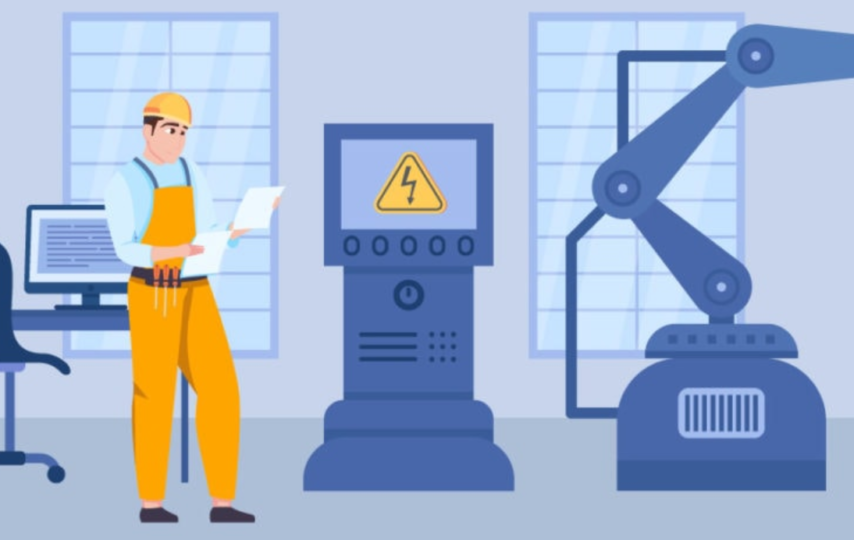Within manufacturing, machine downtime is one of the top issues that impacts production. In an ideal world, machines would be running for every second every second of a shift, so that you can realise maximum productivity. But that simply does not happen, and this is due to a multitude of factors. This guide delves deep into the intricacies of machine downtime, exploring its causes, impacts, and strategies for mitigation to arm organisations with the knowledge to enhance their operational efficacy.
Definition and Importance
Machine downtime is defined as any time the machine is not in a default state of readiness due to scheduled maintenance or unexpected faults The need to manage machine stop-time arises from the direct relationship between production capacity and operating costs. When machines stop, production stops too, resulting in missed deadlines, lost revenue and increased pressure on remaining production equipment. Specifically, understanding and timing machine downtime is critical to maintaining performance and profitability.
Types of Machine Downtime
Machine Downtime time can be divided into two distinct types: planned and unplanned. Scheduled for planned periods of routine maintenance, equipment upgrades, or other necessary changes that will not disrupt production Unplanned downtime, on the contrary, non-warning and often caused by equipment malfunctions or other unforeseen problems, posing significant challenges to production schedules and maintaining operational efficiency.
Causes of Machine Downtime
Equipment Failures
Equipment failure is the leading cause of equipment outages. These failures can be caused by many factors, including deterioration in routine use, use of routine materials, inadequate storage facilities and equipment failure comes in two forms: an immediate withdrawal from production and the need for potentially time-consuming and costly repairs.
Human error
Human error contributes greatly to machine downtime. These can manifest in a variety of ways, such as incorrect interpretation of operating instructions, incorrect machining, or design and configuration errors For example, for CNC machines they rely on a significant number of codes to function properly, and if these codes do not work properly without being properly enforced by operators Instead , it emphasizes the importance of comprehensive training and performance management appropriate for and to reduce the emphasis on such incidents.
Supply chain issues
Disruption of supply chains can accelerate downtime by delaying critical components required for production or repair. These problems can stem from logistical challenges, supplier shortages, natural disasters, or geopolitics, each of which adds complexity to maintain operational growth if in a continuous process.
Impacts of Machine Downtime
Impact on Production Quality
Automation changes the productivity indicator by the closure of factor production frontiers and by the falling back of labor productivity Every minute that a machine is in operation, the productivity in a factory plant is reduced. This slows down the progress, to the extent that orders get spread around and deliveries need to be planned.
Impact on Operating Costs
Coverdowns for machines can result in many different kinds of expenses such as decline in value, additional costs for overtime, or emergency repairs, penalties for contract failure, loss of required performance and in the end sum all these things can cumulatively and badly affect our profitability.
Impact on Employee Morale
The psychological effect of seldom and awkward-timed downtime on employees is usually not considered properly. Complex work situations as a result are characterised by late events that are hard to cope with, higher stress level, low motivation and demotivation, all of this in addition to other operational hurdles.
Identifying Machine Downtime
Visible Indicators
Identifying content issues earlier is the cornerstone for keeping regular service. The operating indicators to recognize the problem is evident, for example in the excessive vibrations, weird noises or leaks which needs to be addressed by immediate solution.
Assessment at Initial Stages
Since awareness comes with properly recognizing the symptoms when they could occur, it also needs doing some initial research. All of this covers the process of verifying the equipment condition, consulting user manuals for troubleshooting directions to minimize disruptions, as well as downloading specific reports of error.
The Role of Maintenance in Machine Downtime
Preventive vs. Reactive Maintenance
A smart maintenance strategy can significantly reduce unplanned downtime. Preventive maintenance includes regular monitoring, planning, and actions to identify and correct problems before they fail. In other words, efficient maintenance
The Importance of Regular Check-ups
Regular maintenance checks are needed to ensure that the machines are operating in optimal environments. These inspections facilitate early detection of damage, alignment issues, or component failures, resulting in timely corrections that prolong equipment life and reliability .
In conclusion, machine decommissioning is a strong case that has far-reaching implications for productivity, operating costs, and employee morale. Organizations can protect their operations from the impact of downtime by delving into the causes, understanding the root causes and developing strategies to prevent and mitigate them.








